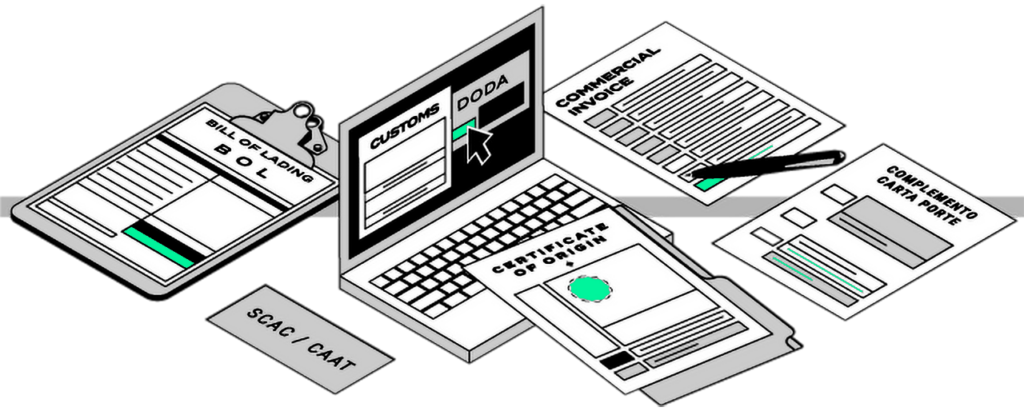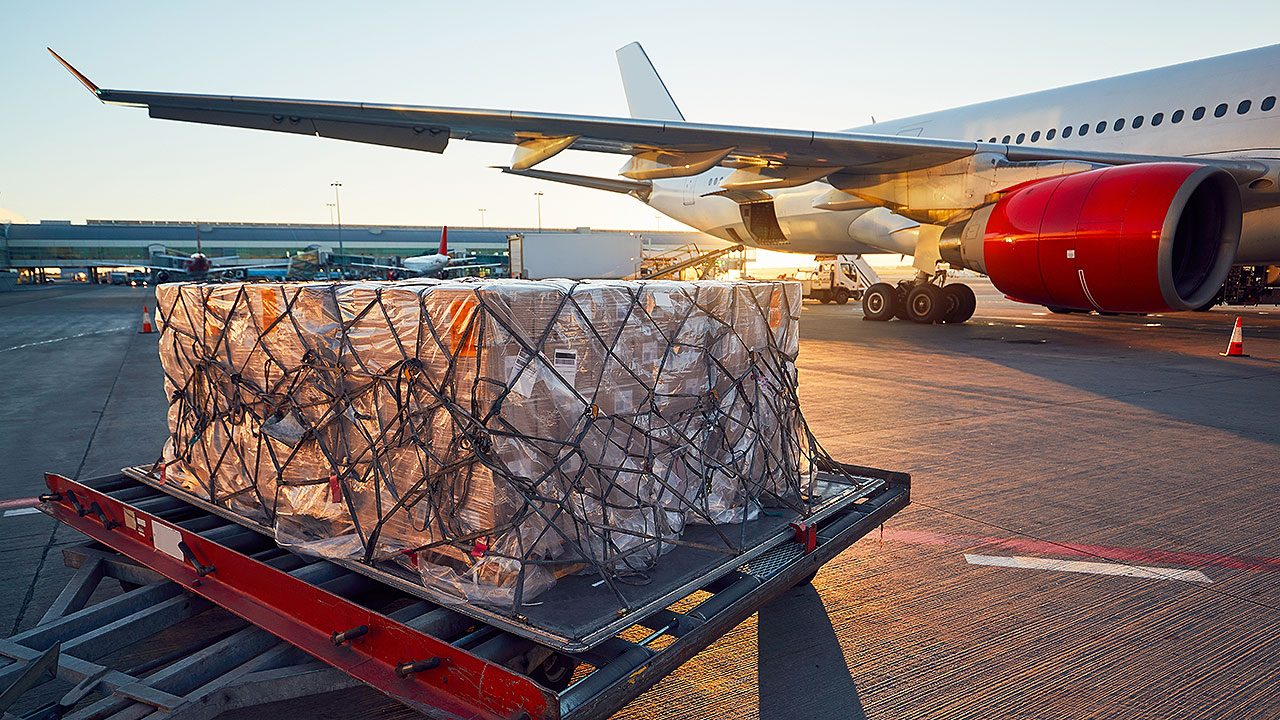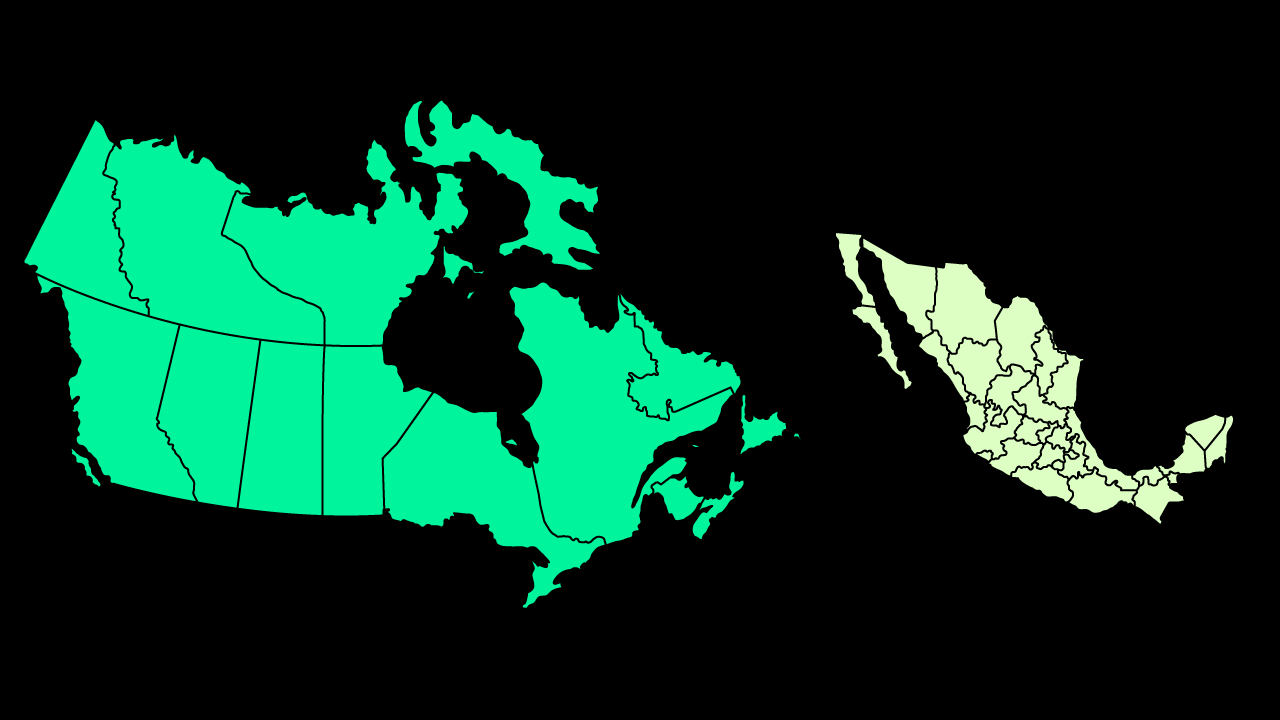Mexico is one of the United States’ largest trading partners.
Every year, over $600B in automotive, machinery, electronics, consumer goods, medical instruments and other goods flow across our southern border.
And 83% of that cross-border freight is hauled via truckload.
Nearly 35,000 trucks cross the Mexico-U.S. border every day, and though it’s extremely common, it is more complex than domestic truckload.
Like any journey, there can be setbacks, uncertainties and frustrations. There are also risks to be aware of, but there is no need to fear.
We’ll walk you through all the basics, giving you a step-by-step process to get your freight over the border, whether you’re shipping truckload freight from Mexico to the U.S., or the U.S. to Mexico.
Guide to Cross-Border Mexico Freight Shipping
Using a Customs Broker in Mexico Cross-Border Shipping
Before you get your shipment ready and choose your cross-border freight provider, you will want set up your customs broker.
Though you can clear your own shipment with customs, a good broker will make the process much easier, helping you to avoid penalties and costly delays.
In short, it’s a good idea to have a customs broker for all shipments to and from Mexico.
Keep in mind that it may take up to several weeks to get set up with a customs broker, so plan well in advance if you don’t already have one lined up.
Don’t have a customs broker for your shipment?
Learn about the solutions offered by RXO’s customs clearance team.
Paperwork: 7 Documents You’ll Need to Ship Freight Across the U.S.-Mexico Border

There is a lot of detailed documentation and information required, and getting it wrong can result in your freight getting held up at the border.
Every shipment is different, and you may need additional paperwork, but here’s an overview of the most common things you’ll need.
1. Bill of Lading (BOL)
You will want to have a customs broker before you can fill out this contract between the freight carrier and the shipper.
It also provides the driver and carrier with all the essential details needed to process the freight shipment and invoice it correctly, such as the shipper’s address and contact information and a description of the goods in transport, including the size and weight.
The shipper or exporter will generate the BOL and will send copies to the customs broker, carrier or 3PL.
Pro Tip: In Mexico, the BOL is called a “Carta Porte”.
2. Complemento Carta Porte
Since 2022, all goods transported in Mexico must be accompanied by a complemento carta porte document, or complement to the bill of lading.
This document, which is generated by the carrier, is mandated by Mexico’s Tax Administration Service and requires detailed information about:
- Goods that will be moved throughout the Mexican territory.
- Shipper and receiver identification and location.
- Mode of transportation.
- Driver identification for over-the-road shipments.
All information contained in the complemento carta porte must match the BOL and the commercial invoice (see below). Communicate with your carrier to make sure all information required for this document is in order. Failure to comply may result in fines and suspension of operating authority for carriers.
3. Commercial Invoice
This document will assist the importer in clearing the goods with customs.
You must have the following information to properly fill out this form, and it must match the information in the BOL:
- Vendor’s full legal name, address, and country
- Consignee full name and address
- Detailed description of each item being shipped
- Net/gross weight
- Unit price of each item (using the payment currency)
- Extended price
- Payment currency
- Terms of delivery and terms of payment
- Date on which goods began shipment
- Reference numbers
- Import license (if applicable)
- Freight charges/insurance
4. Carrier Information
The customs broker will need the codes that identify the carriers transporting the freight on each side of the border.
In the U.S. this code is known as the Standard Alpha Carrier Code (SCAC), and in Mexico it’s the Carrier’s Harmonized Alphanumeric Code (CAAT for its acronym in Spanish).
5. Certification of Origin
Under NAFTA, the U.S, Canada and Mexico required a uniform Certificate of Origin to prove that imported goods qualified for preferential tariff treatment.
Under the USMCA, proof of origin is still needed, but the information does not have to follow a prescribed format.
This document requires a lot of the same information as other paperwork, as well as the tariff classification. It can be completed by the importer, exporter or producer.
Another change from NAFTA: The certificate can be signed electronically. NAFTA required a wet signature.
6. Document of Operations for Customs Clearance (DODA)
The Mexican government is moving to streamline trade by introducing more digital workstreams.
The DODA (acronym in Spanish) is generated by the customs broker on behalf of the carrier in the Mexican Tax Administration Service website. The carrier will need it to clear customs.
7. U.S. Customs Declaration
Carriers are required to submit an automated cargo manifest (e-Manifest) to U.S. Customs and Border Protection prior to a truck’s arrival at a U.S. border crossing.
Pro Tip: Not every cross-border load is the same — depending on your exact shipment, you may need additional paperwork.
This is where an experienced customs broker will help you out.
Work with them at least a full week before your shipment to verify all the paperwork you’ll need.
Choosing a Mexico Cross-Border Freight Provider
Once you have your customs broker set up, you’ll need to decide on what provider is going to help you move your freight.
Similar to the domestic U.S. market, you have two basic service options:
- Asset-based carrier
- Third-party logistics provider (aka a 3PL, broker or freight forwarder)
When you ship freight from Mexico to the U.S. or vice versa, there are going to be multiple drivers in most scenarios, even for through-trailer service.
It can be a complex process, and an experienced cross-border 3PL can help you source trusted carriers, open up flexible capacity and help manage the full shipping process.
Choosing a Service: Through-Trailer vs. Transloading
You have two service options: transloading or through-trailer.
- Transloading: freight is transferred from one trailer to another at a secured facility near the border.
- Through-Trailer: freight stays in the same trailer throughout the entire cross-border shipping process.
One option is not necessarily better than the other at all times — the best choice for you will depend on your freight, budget, operational requirements and current market capacity.
You can learn more about the pros and cons of transloading and through-trailer and make the call on your own, but working with an experienced 3PL is the best way to decide what’s right for your shipment.
Northbound vs. Southbound: 3 Key Differences When Shipping Into Mexico
Though the process of shipping into Mexico across the border is very similar to shipping from Mexico to the U.S., there are three key differences when moving freight to the south:
- Southbound shipments are dropped at the customs broker.
When shipping southbound, the U.S. carrier will drop the trailer at the custom broker’s facility on the American side of the border.
At the facility, a Mexican customs official will conduct a physical inspection of the freight prior to crossing, breaking the seal and putting on a new one.
This is true whether you are shipping through-trailer or transloading.
Northbound shipments will usually drop at the carrier’s yard. - Mexican truck drivers do not generally have visas to enter the U.S.
There is almost always going to be a separate crossing driver that takes your trailer across the border. - If you are transloading, the transfer will likely happen at the customs broker’s facility.
The customs broker facilitates the physical inspection, and also has facilities with cross-docking capability. In some instances, however, the transfer will take place at a transload facility prior to going to the customs broker.
Common Mistakes in Cross-Border Mexico Shipping
These mistakes are easy enough to avoid, but if you skip over them, your shipment will likely get stuck at the border.
This can result in delays and additional fees.
- Waiting too long to establish a customs broker.
- The information on the commercial invoice and BOL do not match.
- Shipping before you’re in total alignment with your customs broker.
- Not confirming after-hours contact information.
- Underestimating transit time.
How Truckload Freight Crosses the Mexico-U.S. Border
You’ve learned the basics of cross-border shipping.
You know about the paperwork, customs and service options, let’s quickly walk through the full process step-by-step.
We’ll look at a northbound (Mexico to U.S.) shipment that is being transloaded, but most of the steps apply for through-trailer and/or southbound.
11 Steps to Moving a Cross-Border Mexico Truckload Shipment
- Set up your customs broker.
Allow two weeks to get set up with a broker.It also a good idea to provide examples of your paperwork (BOL, commercial invoice, etc.). - Decide on your service option.
Through-trailer or transloading. - Select your freight provider.
Choose what’s right for your business. A scaled 3PL can give you lots of expertise and flexible capacity options. - Have an on-boarding call with all parties.
If it’s the first time you are all working together, get the shipper, the customs broker and the carrier on a call.
You are a team, and you all need to work together for a smooth process. - Get all your paperwork together.
You will need at least a BOL and a commercial invoice.
You may need more documentation; your customs broker can help guide you.
Work with the facility in Mexico several days ahead of time. - Ship your freight.
The driver gets loaded and heads for the border. - File the documents with customs broker.
The shipper will need to provide any final documentation (trailer number, etc.).
Typically, the shipper sends to the customs broker with the customer and carrier cc’d. - The customs broker will clear your shipment with customs.
Your Mexico customs broker will start to clear with Mexico customs, and will communicate with their U.S. counterpart to clear with U.S. Customs & Border Patrol.
This typically takes from half a day to a full day, assuming all the paperwork is in order. - Carrier dispatches a crossing driver.
Once the shipment clears, the customs broker notifies the carrier, who dispatches a driver.
The customs broker makes sure the driver has the DODA and e-manifest. - Shipment crosses the border.
Depending on traffic, this will typically take 2-5 hours. However, if there are inspections ongoing or other disruptions at the border, this process can be much longer.
The driver will present the paperwork and the trailer will run through a scanner.
There usually is not any further inspection, but sometimes drivers are pulled into checkpoints for further inspection — be prepared for potential delays. - Transloading facility cross-docks the freight.
The crossing driver takes the trailer over the border and drops it at the transloading facility.
The U.S. carrier arrives at the transload facility, and freight is cross-docked to their trailer.
That’s it! Your shipment is ready for final delivery.
Like any other domestic load, the U.S. carrier delivers final product at the consignee.


